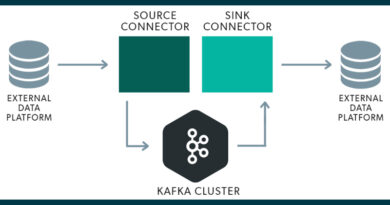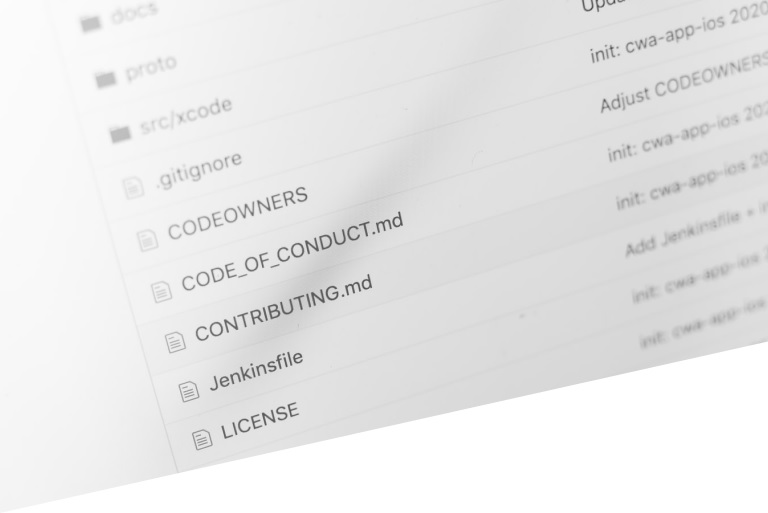Free software migration practices and methods
In recent years, the software landscape has changed a lot, mainly with the proliferation of open source software (OSS).
This software, as we know, is characterized by the fact that its source code is accessible to anyone, and can be modified without problems and to the taste of each individual (depending on its license, of course, which we will discuss later). This philosophy has revolutionized the way in which software is created, distributed and used, becoming an important force in today’s technological world.
Free software is proving to be an attractive option for several reasons; not only is it cheaper, but it also offers greater flexibility and security. Its use now extends from supporting critical infrastructures to driving cutting-edge innovations.
However, the adoption of open source software is not without its challenges; it is important to understand these challenges and follow best practices for responsible adoption. By following these premises, we will be able to take full advantage of the benefits of open source software while mitigating any potential risks we may encounter.
Advantages of migrating to open source
Today, companies and organizations are on a never-ending quest to optimize not only efficiency, but also agility and innovation. Thanks to the collaborative development model of open source software, a feasible and capable alternative to traditional, proprietary and closed source is achieved.
Migrating to open source presents a wide range of benefits, ranging as we have said from significant cost savings and improved security, to greater flexibility and a vibrant community for support and collaboration.
Below, we will discuss some of these benefits.
Relationship between cost and efficiency
Open source software allows organizations and companies to increase their profitability because:
- Eliminates costs: associated with the payment of proprietary licenses.
- It allows customization: reducing dependence on external suppliers and their cost.
- In general, software requirements are lower: which implies a reduction in the cost of infrastructures.
Flexibility
Open source software also offers a flexible and adaptable base according to technological needs, allowing companies and organizations to have control and be able to solve problems that arise more quickly and to scale more efficiently.
This is possible because:
- The code is customizable: allowing the software to be adapted to the specific needs of each moment.
- It integrates seamlessly with other systems: thanks to the use of open standards.
- There is no dependency on the supplier: which allows for greater negotiation power and agility.
Security and transparency
In today’s digital world, the concepts of security and transparency are fundamental for any company or organization. Therefore, open source software faces this challenge by helping such organizations
- Principle of “many eyes”: large developer communities faster identification and resolution of vulnerabilities.
- Community-driven security: proactive vulnerability monitoring and knowledge sharing.
- Customizable security: customizable security and code transparency enable organizations to take a security posture.
Innovation
Another great advantage of adopting open source software is that the level of opportunities for innovation in companies and organizations is enormous, allowing them to get creative in the solutions to be developed. In addition, thanks to the collaboration within the communities that collaborate with open source software, they promote learning, knowledge dissemination and continuous innovation, thus keeping companies and organizations that use this type of software at the forefront.
This is achieved through:
- Access to a broad pool of talent and expertise: through the worldwide open source community.
- Rapid prototyping and experimentation: with new technologies and ideas.
- A shared code base: serving as a springboard for innovation.
- Fostering a culture of openness and knowledge sharing: leading to breakthrough innovations.
Open source not only brings companies and organizations a number of advantages, as we have seen, but it will also help to overcome the main challenges in the modern software industry, as we will see below.
Challenges of open source software
Today’s organizations and businesses face a number of challenges related to the use of proprietary software that hinder its viability. These include associated costs, socio-cultural implications, geographical impact and market conditions.
Let’s look at these challenges in detail.
Unpredictable costs
Cloud services involve costs that are usually not always constant, as unexpected usage peaks can occur and lead to unexpected extra expenses, making budgeting and planning difficult. The use of open source software allows for cost stability with transparent pricing from the outset, as well as fully customizable solutions.
Socio-cultural repercussions and geographical impact
As we know, proprietary software can be affected by both socio-cultural and geographical requirements; software that is unavailable, limited in its capabilities, etc. The use of open source software allows for a:
- Sovereignty: control over deployment and maintenance, reducing dependence on certain countries.
- Continuity: with the ability to fork projects to maintain critical software, even if the original projects are sanctioned.
- Vendor independence: providing freedom from vendor constraints through globally accessible code.
- Community support: giving access to a global support network even if vendor support is not available.
Market conditions
To try to overcome the intrinsic economic challenges of the market, the use of open source software allows:
- Cost control: eliminating license fees and encourages flexibility, freeing resources for innovation.
- Agility and adaptability: enables rapid adaptation to market requirements.
- Resilience: reduces dependence on suppliers or regions, ensuring technology availability during outages.
Open source software offers a very interesting and valuable alternative for companies and organizations looking for cost-effective, flexible and secure software solutions in today’s unpredictable environment.
Software license management
When creating open source software, it is essential to understand how software licenses work, since the fact that a software is open source does not mean that it can be used in any way.
First of all, you have to check if the license associated with the software allows you to use it in the way it is intended. The same applies to open source software that we may generate ourselves. The license attached to the software will determine how others can use, modify and redistribute it.
How to choose the ideal software depending on its license
When choosing free software, it is interesting to take into account the following points:
Copyright and distribution
- Does the license allow the software to be distributed freely? Can it be distributed if it has been modified?
- Are there any restrictions on how it can be distributed?
Modification
- Can the original code be modified to adapt it to the needs of a project?
- Are there any limitations on how it can be modified?
Commercial use
- Can the software be used in a commercial product or service?
- Is commercial use restricted in the license, or does it require additional steps?
Attribution
- Does the license specify the need to cite the original authors?
- How should the acknowledgment be indicated?
Warranty and liability
- It is important to note that open source software often lacks a warranty.
- Does the license clarify who is responsible for any problems arising from the software?
The Open Source Initiative Licensing Reference (OSI) explains the various licenses associated with open source software. The most common licenses are:
- Apache License 2.0: this is a very popular and permissive license that strikes a good balance between openness and protection of the original code. This type of license requires maintaining copyright acknowledgements, providing a copy of the license with the distributed code and following certain requirements, but allows free use, modification and distribution, even for commercial purposes.
- MIT License: this is another very permissive license, which allows keeping the copyright and license notice intact, but otherwise allows free use, modification and distribution of the code, even for commercial purposes.
- BSD licenses: this is a family of permissive licenses, the most popular being BSD2 and BSD3. Similar to the MIT license, it requires maintaining copyright acknowledgements and disclaimers, but otherwise allows free use, modification and distribution.
Conclusion
It is clear that open source software is a real alternative to the use of proprietary software that we have been using. This software implies cost-effectiveness, security, adaptability and a collaborative environment thanks to the development communities that foster an innovation that is a breath of fresh air.
However, when migrating to open source it is necessary to do it with knowledge, applying the best solutions to mitigate potential risks that may exist, as well as to carefully evaluate which dependencies are required. It is necessary to maintain security cleanliness, as well as to contribute responsibly to the open source ecosystem, individual users and companies and organizations so that they can take advantage of the full potential of this type of software. This will both safeguard digital assets and foster a more secure and collaborative technological landscape for all.
This entry is based on the article «Open Source Migration Practices and Patterns» published in DZone by Nuwan Dias.
Header Image: frank mckenna at Unsplash.





